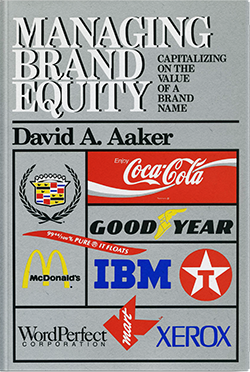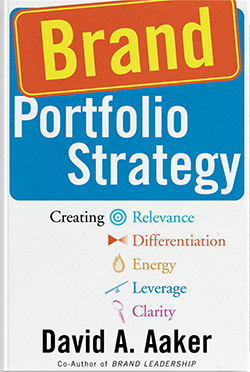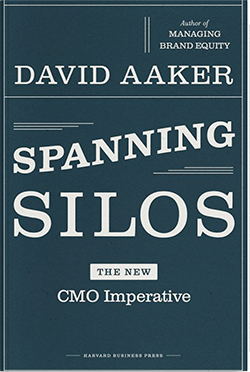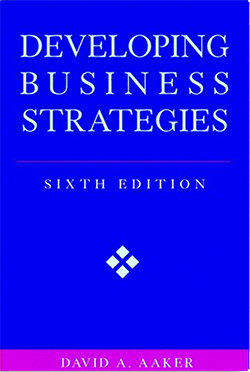Out of my five brand books, what precepts stand out as one of the top ten? Which are the most critical “to do” tasks for someone charged with creating or managing a business? What do you need to know to excel at building a brand? Here is my top ten list:
1. Treat brands as assets.
Acceptance of the concept that brands are assets and have equity really changes not only branding and marketing but also business strategy. No longer is branding a subset of marketing to be managed as a communication problem. It becomes strategic, both reflecting and enabling the business strategy. Importantly, a brand is more than image and awareness—it also includes the size, engagement and loyalty level of the customer base. That means that brand strategy needs to be developed in tandem with the business strategy, both need to be clear on the target market, the value proposition, and the investment priorities over time.
2. Show the strategic pay-off of brand-building.
Part of the challenge of getting brands accepted as strategic is to demonstrate that they pay off. Unlike tactical marketing which can demonstrate short-term results, the long-term effects of brand building are difficult to demonstrate. One way is to observe the success of a business strategy and show how dependent that strategy was on-brand assets. Another is to use surrogates for the long-term impact such as measures of customer loyalty. But it is reassuring to know that, on average, brand building does pay off. I have conducted four studies with Professor Bob Jacobson of the University of Washington which explored the relationship between brand building and financial returns. Our study of brand equity and stock return is typical. A well-known fact in finance is that there is a strong relationship between earnings changes and stock prices. We found that the impact of building a brand on stock return was nearly as great as earnings, actually 70% as much effect.
3. Recognize the richness of brands–go beyond the three-word phrase.
Brand building starts with determining the aspirational associations, what associations should come to mind when the brand is cued. In general, this set should be from six to twelve associations. Of this set, two to four should be identified as the most important and the ablest to drive effective marketing programs, and the most likely to resonate with customers. In the brand identity model, they have termed the core identity elements. There may be a unifying concept termed the brand essence that provides an umbrella summary of the brand’s thrust but in some cases, it just gets in the way.
4. Get beyond functional benefits.
There is a tendency to focus on attributes and functional benefits because they are assumed to be what customers are buying and because market research is often functionally focused. The fact is–customers are not logical and functional benefits rarely provide a basis for sustainable differentiation or a deep customer relationship. Look instead toward emotional and self-expressive benefits. Thus, a customer can feel safe in a Volvo, excited in a BMW, energetic with Coca-Cola around, or warm when receiving a Hallmark card. A person can be cool by buying clothes at Zara, successful by driving a Lexus, creative by using Apple, a nurturing mother by preparing Quaker Oats hot cereal, frugal and unpretentious by shopping at Kmart, or adventurous and active by owning REI camping equipment. Consider also brand personality. Should the brand be confident, competent, fun, warm, or energetic, or some combination of these? Sometimes a brand is best expressed through a personality.
“A brand is more than image and awareness—it also includes the size, engagement and loyalty level of the customer base.”
5. Consider organizational associations.
While most offerings struggle to be differentiated, an organization will have people, programs, values, strategies, and heritage that will almost always be unique. Further, the organizational characteristics can be meaningful to customers. They can provide credibility with respect to the offering by demonstrating or suggesting that the firm has the capability and will to deliver on its promise. Consider the visible commitment of Zappos.com to Wow! Service. Further, organizational values and programs can provide a basis for a relationship. The SalesForce.com policy of providing one percent of their product, time, and sales to public service. For some, that policy reflects shared values that lead to a respect-driven relationship that goes beyond products.
6. Look to role models.
Knowing aspirational associations is a crucial first step, but how to get there is a practical issue. Looking at role models that can be adapted or leveraged nearly always provides useful insights. Suppose a brand aspired to be considered warm and friendly. Find other brands that have succeeded in doing so, including brands in disparate industries. How did they get that reputation? Can anything they did be adapted? Or look within your own firm. What people or programs best exemplify those characteristics to customers? Can their efforts be expanded or extended to other parts of the organization?
7. Understand the brand relationship spectrum.
Brand portfolios can be so messy and dysfunctional that a firm’s new product process is paralyzed because there is no concept of which brand to use on a new offering. Customers may be so confused that they can’t even buy. The brand relationship spectrum can help create clarity, leverage, and synergy in the portfolio. The idea is that a master brand may work for a new offering if its associations are consistent and helpful and will be reinforced by the new role. However, there are times in which the master brand will be inconsistent or confining and the new offering requires some separation. The spectrum suggests that a subbrand will generate some separation, an endorsed brand more, and a separate brand the most. The challenge is to find the right degree of separation and to create brands that can perform these roles.
8. Look for branded differentiators.
It is difficult to create differentiation especially involving functional benefits because a competitor will quickly copy or appear to copy or otherwise neutralize the advantage. Unless you brand it. A competitor cannot copy the brand. If the innovation is branded and the brand established, the competitor’s task of creating and communicating an enhancement will be formidable. When Westin created a superior bed and sleeping experience and branded it the Heavenly Bed, they changed the way that many looked at the hotel experience and the branded differentiator made it difficult for imitators to get traction.
9. Use branded energizers.
We now know that brands across the globe have declined in terms of perceived quality, loyalty, and visibility over the last decade. The exceptions, those brands that have energy, have resisted the decline and still drive financial results. Energy may be the most important imperative for brand builders. The best form of energy, innovative new products, is not available on a regular basis for most firms and not available at all if your offering is an unexciting one like hot dogs or life insurance. In that case, an option is to find some branded program or person, a branded energizer, and attach your brand to it. Avon’s Walk for Breast Cancer is an example of a program that added energy for a brand that could never achieve it with products.
10. Win the brand relevance battle.
The way to gain market position, often the only way, is to develop offerings so innovative that they create new categories or subcategories making competitors irrelevant. The goal is to encourage the customer to select a new category or subcategory for which your brand is the only one with credibility and visibility. In virtually every industry, an analysis will show that market positions are very stable in the absence of such innovation. Relevance is also a threat to the leading brands who must be concerned with having customers — who respect and maybe love their brand — decide that they no longer want to buy what the firm is making, its brand has become irrelevant.





